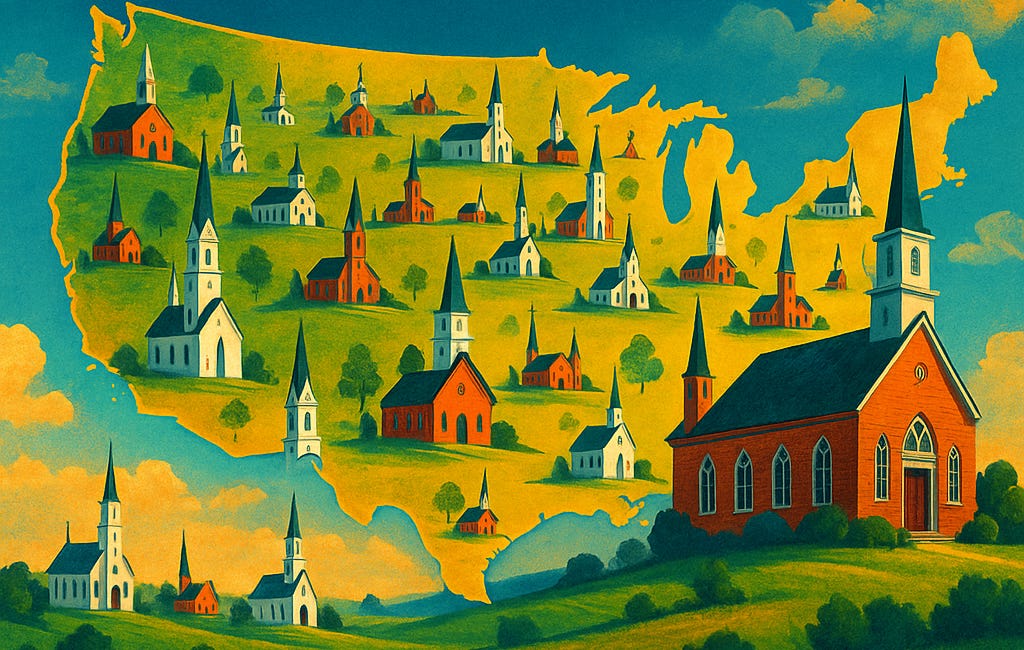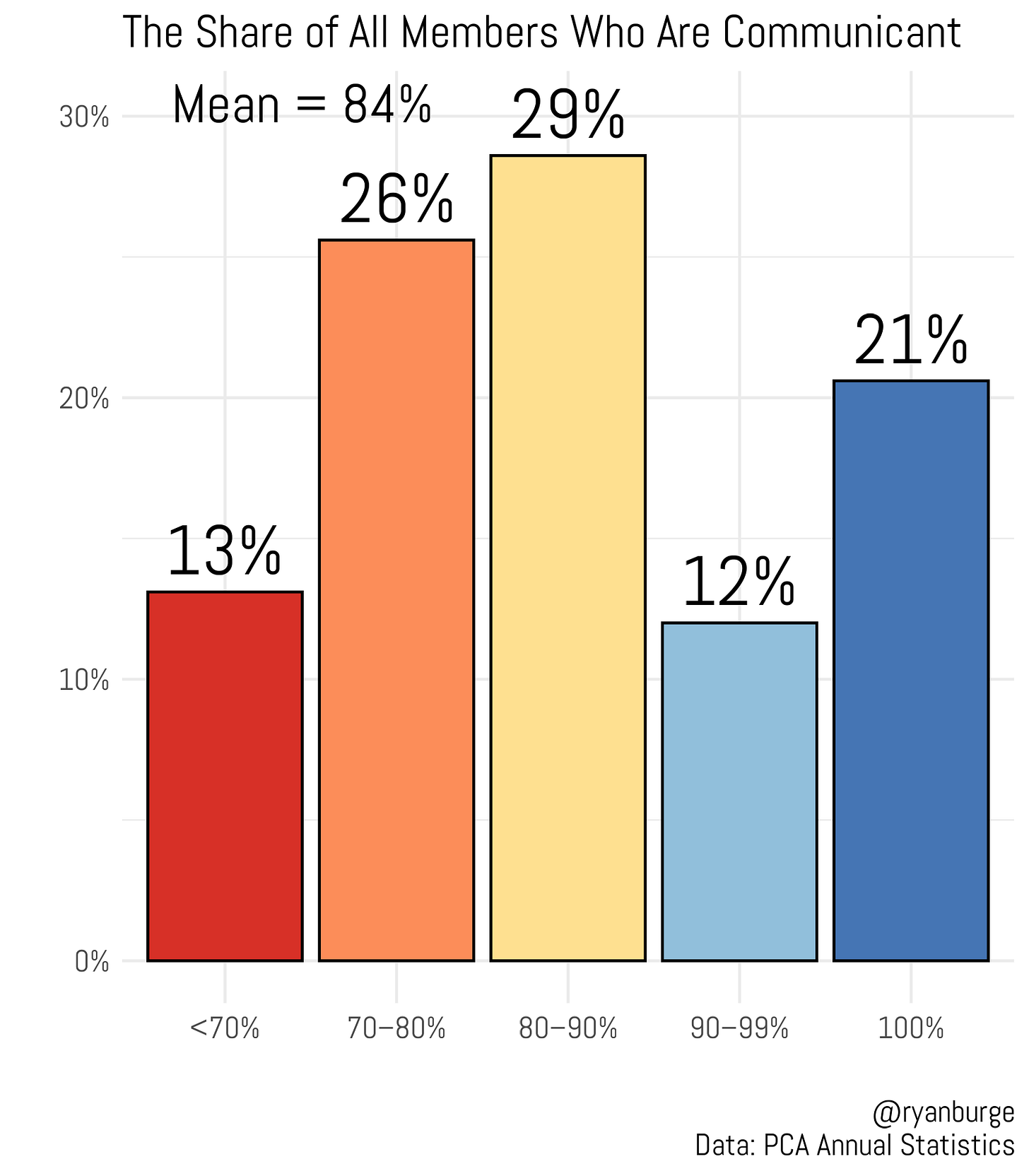Everything You Could Ever Want to Know About Membership and Attendance in the Presbyterian Church of America
You give me good data, I give you good graphs.
Alright, folks. I have to admit, I was really blown away by how much attention my previous post about the Presbyterian Church in America (PCA) got. Tons of new subscriptions, comments, and social media engagement. I loved it, of course — it gave me a nice dopamine hit, and I’m just a lab rat in this techno-futurist experiment. So, let’s do more of it, shall we?
In fact, I’ve got two posts coming about the PCA. This one is going to be a deeper dive into questions about membership, attendance, and additions and subtractions to PCA churches in the database. But before I get there, let me pull back the curtain a bit and explain why I really, really like this data.
When I get my hands on denominational statistics, they’re almost always aggregated in some way. Sometimes it’s just national numbers — for instance, the total number of Episcopalians in the entire United States. Other times it’s broken down into sublevels like states or districts. The United Methodists do that. So do the Evangelical Lutherans. But I can almost never get data at the individual church level.
A Deep Dive into the Presbyterian Church in America
PCA folks, it’s your moment — few denominations punch above their weight online like you do. I’ve tweeted about this before, but you all play an outsized role in the online discourse about American Protestant Christianity. To celebrate that, I just did a pretty deep dive into the statistical data released by the Presbyterian Church in America. Thanks to their meticulous
Which is incredibly frustrating, because that’s where the real insights are. What percentage of church members are regular attenders? Does that vary by church size? How do larger churches add members compared to smaller ones? Are deaths causing big churches to decline faster than small ones? With aggregate-level data, I just can’t get at those questions.
But the Presbyterian Church in America gets a gold star. They’ve got individual church-level data for most of their 1,700+ congregations.
So, let me show you all the cool stuff I can do with data like this.
For instance, the PCA has two types of members: communicant and non-communicant. Communicant members are folks who have made a credible profession of faith, have been examined and received by the church’s governing body, and are allowed to participate in Communion. Non-communicant members are typically children of communicant members — they’ve been baptized but haven’t yet professed their faith or been admitted to full membership.
In the entire sample, about 84% of all PCA members fall into the communicant category. But when I broke it down into percentage buckets, you can see some variation. Roughly 13% of churches have a communicant rate below 70%. On the other end of the spectrum, about one in five PCA churches report that 100% of their members are communicant — which seems a bit suspect to me, though I don’t know enough about PCA lore to make a judgment either way.
Most PCA churches, however, fall between 70% and 90% on this measure, which makes sense given the overall average of 84%. I want to believe this is a decent proxy for how many younger kids are in the congregation, but someone please tell me in the comments if that’s not a good way to interpret it.
The dataset also includes two key columns: one for average weekly attendance and another for total church membership. So, I did a quick calculation and found that, on average, about 80% of a PCA church’s membership is actually in the pews on a typical weekend. I don’t have anything more than anecdotes to compare that to, but that percentage feels a whole lot higher than what I’ve seen in the Baptist world.




